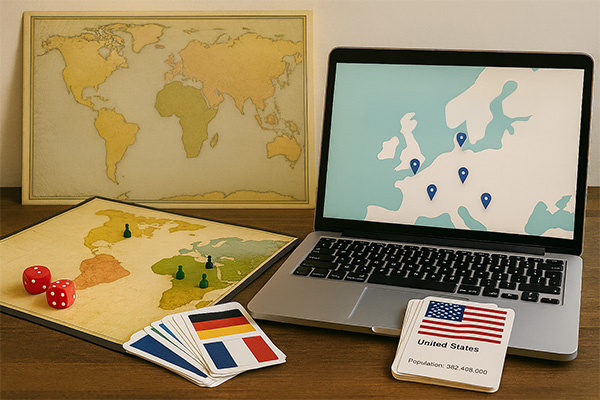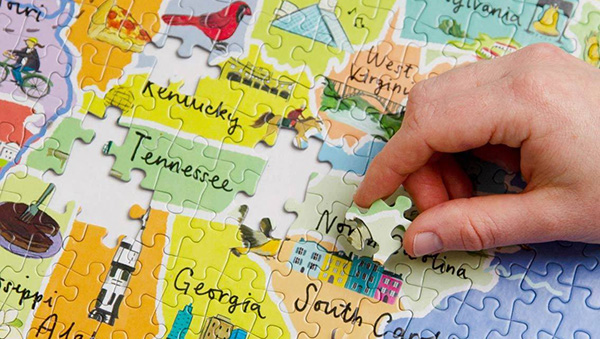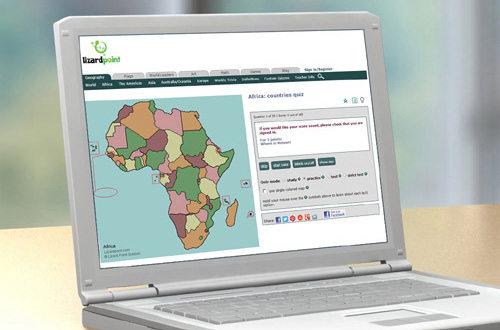Geography Games Through the Ages

Geography games have been used for generations to make learning about the world more engaging. Long before computers, children learned with wall maps, atlases, and board games. Families often enjoyed map-based pastimes at home, ranging from puzzles to strategy games.
Board Games

In the 19th and early 20th centuries, geography-themed board games gained popularity. Simple map puzzles required players to place the names of countries or cities in the right spot. Strategy games such as Risk, first published in the 1950s, brought a global map onto the table and combined geographical awareness with tactical play.
Card Games

Card games also became common. Flag decks, where each card displayed a national flag together with key facts like the capital and population, were used in schools and homes. These games helped players quickly recognize and compare different countries, turning memorization into play.
Physical Jigsaw Puzzles

Puzzle-style geography games have long existed in the form of physical jigsaw puzzles. Maps of the world, continents, or individual countries were printed on cardboard and cut into interlocking pieces. Players would assemble the pieces to reconstruct the map, learning the relative position of countries, states, and regions in the process. These puzzles remain a classic educational tool, often used in schools and homes to combine play with geography practice.
Downloadable Games
The personal computer era of the 1980s and 1990s introduced digital geography quizzes distributed on floppy disks and CD-ROMs. Users could click on maps to identify countries, capitals, or rivers. Many of these programs spread as freeware or shareware and became classroom favorites. Some of the software once downloadable from this domain, Seterra, belonged to that wave of early digital learning tools.
Web Based Games

The 2000s marked the transition to the web. One of the earliest well-known quiz sites was Lizard Point, which has offered free geography quizzes since the early days of the internet. Later, platforms such as Sporcle, JetPunk, and PurposeGames expanded the genre by providing large collections of user-generated quizzes, including many on geography.
Another major innovation was GeoGuessr, launched in 2013, which challenged players to identify real-world locations from Google Street View images. This format showed how geography games could move beyond static maps into immersive, real-world exploration.
Today, geography games exist in many forms: online quizzes, classroom activities, card games, board games, mobile apps, and immersive web experiences. They serve the same purpose as their predecessors — to make geography both enjoyable and educational.
For a wide collection of modern online quizzes, including map quizzes, capitals, and flag challenges, visit ekvis.com. The site continues the tradition of geography learning through interactive play, alongside long-standing resources like Lizard Point, Sporcle, JetPunk and PurposeGames. The site has a clean design, many game modes and minimal ads.